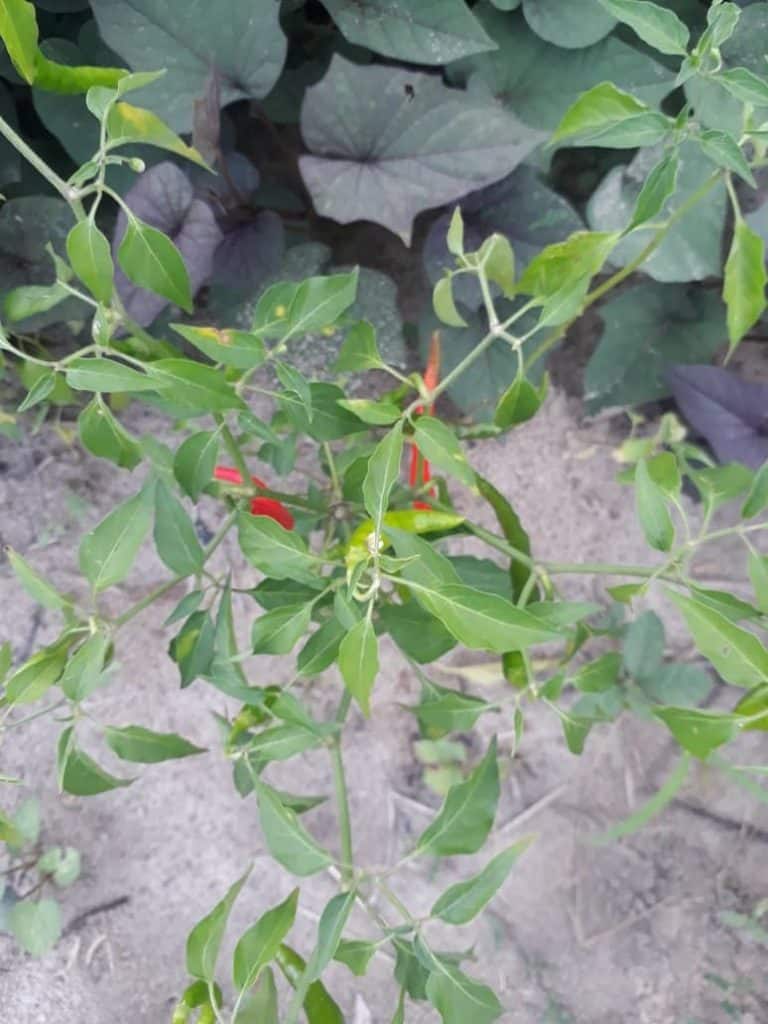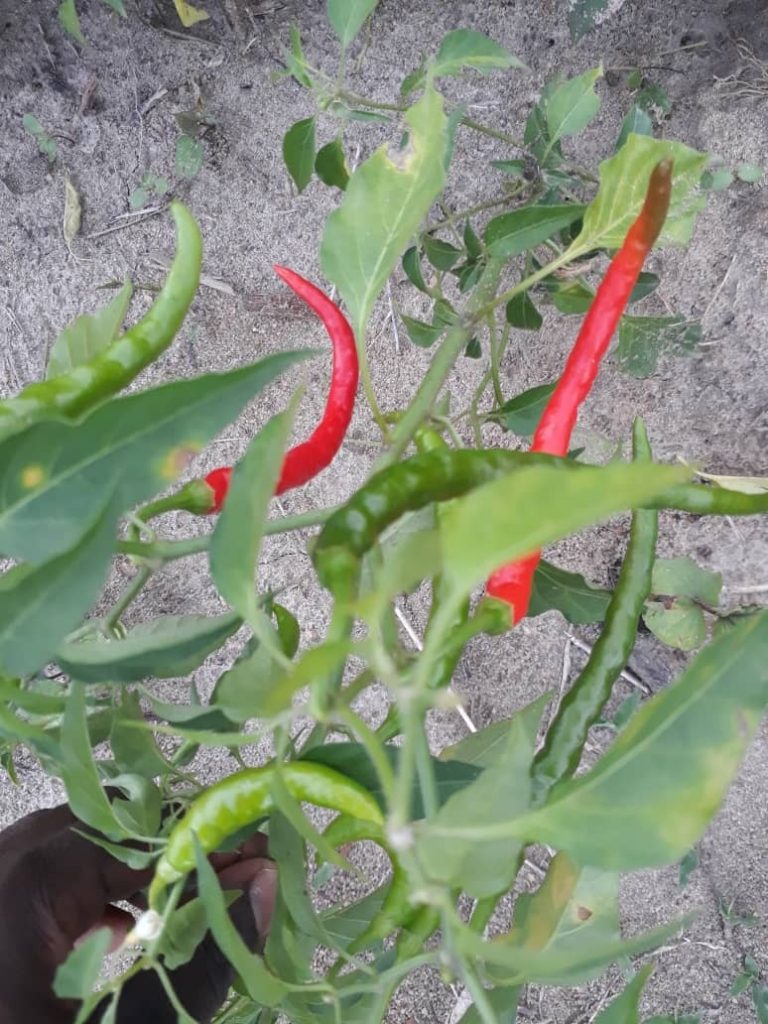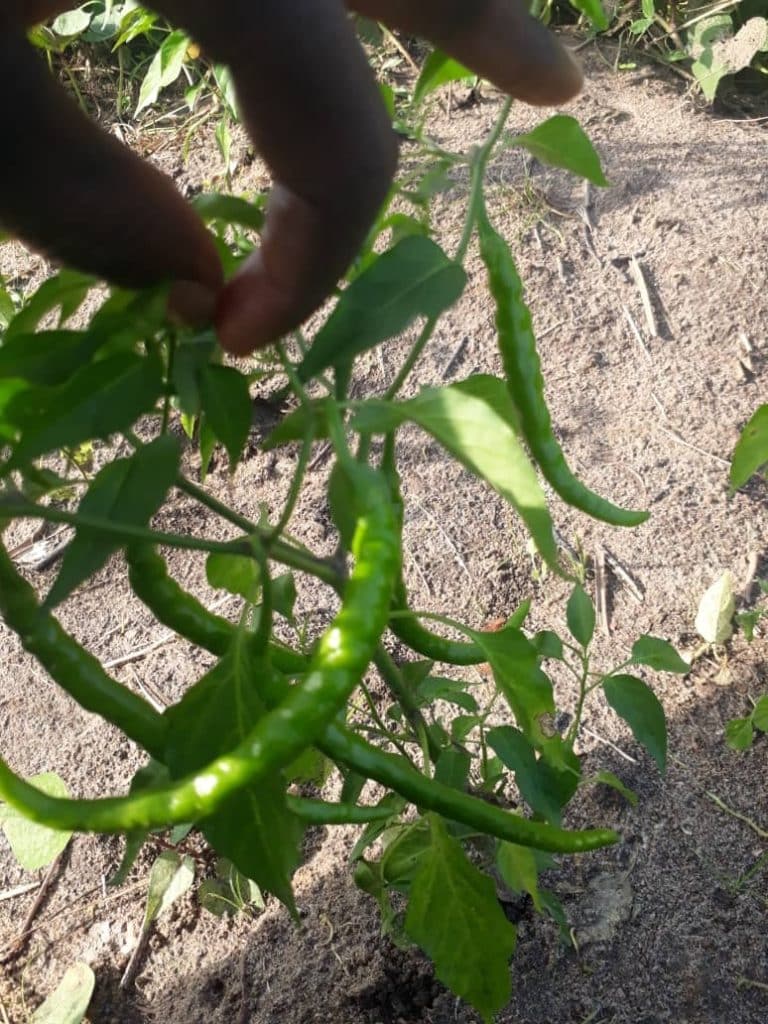Thank you for reading this post, don't forget to subscribe!
Looking to venture into the lucrative world of agriculture? Consider starting a profitable pepper farming business in Ghana! With its fertile soil and favorable climate, Ghana provides the perfect environment for cultivating peppers.
Whether you’re a seasoned farmer or a beginner looking to dive into agribusiness, this step-by-step guide will equip you with the knowledge and tools you need to succeed. From selecting the right pepper varieties and preparing the land to implement effective pest control strategies and marketing your produce, we’ll cover it all. Discover the secrets to maximizing your yields, reducing costs, and turning your pepper farm into a profitable venture. Get ready to embark on an exciting journey that promises not only financial success but also contributes to the sustainable development of Ghana’s agricultural sector. Let’s dive in and unlock the potential of pepper farming in Ghana!
Why start a pepper farming business?
Pepper farming offers numerous advantages that make it an attractive business opportunity in Ghana. Firstly, there is a high demand for peppers both locally and internationally. Ghanaians have a preference for spicy foods, and peppers are a staple ingredient in many traditional dishes. Additionally, the export market for peppers is thriving, with countries like the United States, the United Kingdom, and the Netherlands being major importers. This presents a great opportunity for farmers to tap into these markets and earn substantial profits.
Furthermore, peppers are relatively easy to grow and require minimal resources compared to other crops. They have a short growing period, allowing for multiple harvests within a year. This means that farmers can generate revenue more quickly and increase their overall profitability. Additionally, the versatility of peppers allows for various value-added products such as sauces, pickles, and dried peppers, which further diversify income streams.
Market demand and profitability of pepper farming in Ghana
The market demand for peppers in Ghana is significant and continues to grow. In recent years, there has been an increase in consumer preference for fresh, locally sourced produce. This shift towards healthier eating habits has created a demand for organic and pesticide-free peppers, presenting an opportunity for farmers to cater to this niche market.
Moreover, the export market for Ghanaian peppers is expanding. Ghana has a favorable trade relationship with several countries, which facilitates the export of agricultural produce. This, coupled with the increasing global demand for peppers, makes it a profitable venture for farmers who can meet the required quality and quantity standards.
To ensure profitability in pepper farming, it is essential to adopt modern cultivation techniques and practices. This includes using quality seeds or seedlings, implementing efficient irrigation systems, and proper pest and disease management. Additionally, farmers should explore value-added products and establish strategic partnerships with local restaurants, supermarkets, and exporters to maximize their profits.
Step 1: Research and plan for your pepper farm
Before starting a pepper farming business, thorough research and planning are crucial. This involves understanding the local market demand, identifying potential customers, and conducting a feasibility study to assess the viability of your venture. Consider factors such as land availability, access to water, transportation logistics, and the availability of support services such as extension officers and agricultural input suppliers.
Additionally, it is essential to familiarize yourself with the different pepper varieties and their specific requirements. Some popular pepper varieties grown in Ghana include Scotch bonnet, habanero, and bell peppers. Each variety has distinct characteristics in terms of taste, heat level, and disease resistance. Understanding these variations will enable you to make informed decisions when selecting the right pepper variety for your farm.
Step 2: Acquiring land and preparing the soil
The next step in starting a profitable pepper farming business is acquiring suitable land and preparing the soil. Look for land with well-drained soil, preferably loamy or sandy soil types. Avoid areas prone to flooding or with poor drainage, as excessive moisture can lead to diseases and stunted growth in pepper plants.
Once you have acquired the land, it is crucial to prepare the soil properly. Begin by clearing the land of any weeds, rocks, or debris this will help determine the type and amount of soil amendments needed, such as organic matter or lime, to create an optimal growing environment for pepper plants.
Step 3: Choosing the right pepper varieties
Selecting the right pepper variety is a critical decision that will impact the success of your pepper farming business. Consider factors such as market demand, climate suitability, disease resistance, and yield potential when choosing the varieties to grow. It is advisable to consult with local agricultural experts or extension officers who can provide guidance based on your specific location and farming conditions.
When deciding which crop varieties to grow, it’s important to consider your target market. If you plan to export your produce, you should focus on varieties that have a longer shelf life and an attractive appearance. On the other hand, if you’re supplying the local market, it’s better to choose varieties that are popular and in high demand among consumers. Knowing your target market and its preferences will help you make informed decisions that can maximize your profitability.
Step 4: Sourcing high-quality seeds or seedlings
To ensure a successful pepper farming venture, it is crucial to source high-quality seeds or seedlings. The quality of your planting material directly affects the overall yield and quality of your peppers. Look for reputable seed suppliers or nurseries that provide certified seeds or healthy seedlings.
When purchasing seeds, consider factors such as germination rate, disease resistance, and variety characteristics. Opt for seeds that have a high germination rate, as this will increase the chances of successful plant establishment. Also, choose varieties known for their resistance to common pepper diseases prevalent in your area. This will minimize the risk of crop loss and the need for excessive pesticide use.
Step 5: Planting and care for your pepper plants
Once you have acquired high-quality seeds or seedlings, it’s time to plant your pepper crop. The ideal time for planting peppers in Ghana is during the rainy season when there is sufficient moisture in the soil. This ensures proper establishment and reduces the need for excessive irrigation.
Before planting, prepare the planting holes or beds, ensuring adequate spacing between plants to allow for proper growth and airflow. Pepper plants generally require a spacing of 18-24 inches between rows and 12-18 inches between plants. Plant the seedlings at the same depth as they were in the nursery and water them immediately after planting.
To care for your pepper plants, it is essential to provide them with the necessary nutrients and water. Implement a regular fertilization program using organic or inorganic fertilizers to ensure optimal plant growth and fruit development.It’s important to monitor soil moisture levels and avoid overwatering.
Step 6: Pest and disease management in pepper farming
Pest and disease management is crucial to protect your pepper crop from potential yield losses. Common pests that affect pepper plants include aphids, whiteflies, thrips, and nematodes. These pests can cause damage to foliage, flowers, and fruits, reducing the overall yield and marketability of your crop.
To effectively manage pests, it is important to implement integrated pest management (IPM) strategies. This includes a combination of cultural, biological, and chemical control methods. Cultural practices such as crop rotation, maintaining proper plant spacing, and removing weed hosts can help minimize pest populations.
Diseases such as bacterial wilt, powdery mildew, and viral infections can also affect pepper plants. To prevent and manage diseases, practice good sanitation by removing and destroying infected plant material. Implement crop rotation to break disease cycles, and apply appropriate fungicides or biocontrol agents when necessary. Regular scouting and monitoring of your crop will help identify potential pest or disease problems early, allowing for timely intervention and effective management.
Step 7: Harvesting and post-harvest handling of peppers
Harvesting is a crucial stage in pepper farming that requires careful timing and handling to ensure optimum quality and marketability. The right time to harvest peppers depends on the variety and the intended market.
Peppers are harvested at different stages, from green to fully ripe. Green peppers are typically picked before they start changing color to ensure that they have a longer shelf life and maintain their crisp texture.
To harvest peppers, use sharp pruning shears or a knife to cut the fruits from the plant, leaving a short stem attached. Avoid pulling or twisting the fruits, as this can damage the plant and reduce the shelf life of the peppers. Handle the harvested peppers with care to minimize bruising or damage.
After harvesting, it is important to handle and store the peppers properly to maintain their quality. Sort the peppers based on their size, color, and quality, discarding any damaged or diseased fruits. Pack the peppers in clean, ventilated containers or crates to allow for air circulation and reduce the risk of rotting. Store the peppers in a cool, dry place away from direct sunlight to prolong their shelf life.
Step 8: Marketing and selling your peppers
Marketing plays a crucial role in the success of your pepper farming business. To effectively market and sell your peppers, start by identifying your target customers. This can include local consumers, restaurants, supermarkets, or exporters. Tailor your marketing strategy based on the preferences and needs of your target market.
Consider participating in local farmers’ markets, where you can directly interact with customers and showcase the quality of your produce. Establish relationships with local restaurants and supermarkets by offering sample products or providing them with promotional materials highlighting the benefits of your peppers. Additionally, explore online platforms and social media channels to reach a wider audience and promote your business.
To differentiate your peppers from competitors, consider value-added products such as pepper sauces, dried peppers, or pickled peppers. These products can attract customers looking for unique and flavorful options. Package your peppers attractively and provide accurate labeling and product information to build trust and establish your brand.
Financial planning and budgeting for a pepper farming business
To ensure the financial success of your pepper farming business, it is essential to develop a comprehensive financial plan and budget. This involves estimating your initial investment costs, including land acquisition, infrastructure development, seed procurement, and labor expenses. Consider the ongoing operational costs such as fertilizers, pesticides, irrigation, and labor.
Create a sales forecast based on your peppers’ expected yields and market prices. This will help you determine your revenue projections and assess the profitability of your venture. It is advisable to consult with financial experts or agricultural economists to ensure accurate financial planning and to explore potential funding options or grants available for agricultural entrepreneurs.
Challenges and solutions in pepper farming in Ghana
While pepper farming in Ghana offers great potential, it is not without its challenges. Common challenges include unpredictable weather patterns, pests and diseases, and market fluctuations. To overcome these challenges, it is important to implement risk management strategies such as crop insurance, diversification of crops, and proper pest and disease management practices.
Collaboration and knowledge-sharing within the farming community can also help address challenges. Join local farmer associations or cooperatives to access resources, share best practices, and collectively address common issues. Additionally, staying updated with the latest agricultural research and technologies can help farmers stay ahead and adapt to changing conditions.
Support and resources for pepper farmers in Ghana
Pepper farmers in Ghana can access various support services, resources, and government initiatives to enhance their farming practices and profitability. The Ministry of Food and Agriculture provides extension services, training programs, and access to agricultural inputs for farmers. Additionally, research institutions such as the Council for Scientific and Industrial Research (CSIR) and the Crop Research Institute (CRI) offer technical support, research findings, and improved varieties to farmers.
Farmers can also leverage technology and mobile applications to access weather forecasts, market information, and agronomic advice. The use of drones and satellite imagery for crop monitoring and precision agriculture is also gaining popularity among farmers in Ghana.
Conclusion
Starting a profitable pepper farming business in Ghana is an exciting and rewarding opportunity. From careful planning and soil preparation to effective pest management and marketing strategies, each step is crucial for maximizing your yields, reducing costs, and ultimately achieving financial success. As you embark on this journey, remember to adapt and learn from challenges, seek support from the farming community, and stay updated with the latest agricultural practices and technologies. Pepper farming not only promises profitability but also contributes to the sustainable development of Ghana’s agricultural sector. Now, it’s time to turn your passion for farming into a thriving pepper farming business!




Well advised
I’m planning to start vegetable farming in Ashiaman so will be contacting your company for further advise after reading such an eye opening presentation.
Overwhelmed